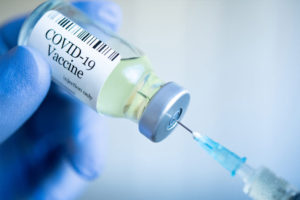
Understanding the COVID-19 Vaccination Situation in the United States
With the Covid-19 pandemic now coming close to one full year of prominence and surging once again most eyes in the United States have begun to focus on the vaccination rollout soon to be taking place across the country in the hopes of seeing the end of the virus come soon. However, with an unprecedented turnaround for this vaccination and two different versions being released, misinformation and confusion are running rampant. This article will serve as your guide in understanding what the situation really is.
The Two Vaccines for COVID-19:
The first vaccine to meet the FDA’s requirements in order to be released to the public was Pfizer’s which is a pharmaceutical giant. Following that, Moderna, a biotech company that had never released a vaccine to the public, also passed testing with their vaccine and was granted emergency permission for it to be released for use on the general public with backing from the Center for Disease Control. Both vaccines use Messenger RNA (mRNA) to mimic the spikes found on the Coronavirus which when introduced to the immune system leads to antibodies for the Coronavirus. Once the antibodies have developed, the body is prepared for contact with the full virus and able to successfully fight it off. The differences between the two structurally lie in the lipid (fat) systems used to deliver the mRNA into the body. These differences are relatively minor and do not seem to have any tangible difference in efficacy as both vaccines were about 95% effective in trials across gender, age, ethnic, and racial demographics. Both vaccines are also administered across two doses.
The biggest difference between the vaccines is in their storage temperature. Pfizer’s vaccine must be stored at extremely cold temperatures and lose effectiveness five days after refrigeration. This has created logistic difficulties for transportation and storage, especially in areas of the country without comprehensive infrastructure built to accommodate those needs, or that are more difficult to reach from distribution centers. Moderna’s vaccine is able to be stored at -20 degrees celsius as opposed to Pfizer’s -75 degree needs, as well as lasting up to 30 days after refrigeration. This makes it significantly easier for storage and transportation which is why Moderna’s has received more support from the FDA and CDC. Both vaccines have been deemed safe with good safety profiles in clinical tests. Symptoms can develop after taking the vaccine such as fevers, swollen lymph nodes, pain at the injection site, fatigue, and chills. However, serious non-fatal symptoms were rare and did not meet the FDA levels needed to prevent emergency authorization.
Distribution of the Vaccine
The United States has acquired the rights to millions of vaccinations from both companies but has highly favored Moderna’s after its approval due to its advantages in storage and transportation. This is reflected in the greater than 3,000 sites set to receive the Moderna vaccine one day after approval as opposed to Pfizer’s 636. Currently, two hundred million vaccines have been purchased from Moderna by the United States with vaccines having been in production since testing and shipment already taking place. Following the distribution, states and local levels will determine the order in which vaccines are delivered, although it is expected for nearly all to follow federal level priority guidelines which place essential workers such as nurses and doctors at the front followed by the most at-risk individuals.

Minimizing your risk to the spread of COVID-19
Official CDC guidelines urge people to wear masks in public settings to limit the spread of COVID-19. Wearing a mask on public and mass transportation, at events and gatherings, in shopping malls, at food stores, and virtually any other place where you will be exposed to others has many benefits. Masks help protect yourself and others from getting or spreading COVID-19, therefore, it is important that you maximize a mask’s effect by properly utilizing it.
Masks with Two or More Layers
Make sure to wear a mask with two or more layers to limit particulate spread, and to wear the mask over your nose and mouth while securing it under your chin. However, there are additional things to avoid in the execution of wearing a mask. For example, refrain from putting a mask on an individual who is two years-old or younger or who has trouble breathing or cannot remove the mask without assistance. Additionally, try and refrain from wearing masks intended for healthcare workers (i.e. N95 respirators).
Masks that Cover Your Nose and Mouth
There are many choices when selecting the mask that is best for you. In this process, it is important to keep a few things in mind to ensure that you are maximizing the safety of yourself and others. Make sure the mask of your choice has two or more layers of breathable fabric, completely covers your nose and mouth, and fits snugly against your face (no gaping on the sides). Moreover, masks with exhalation valves or vents that allow virus particles to escape should never be worn. You may also wear a gaiter with two layers if you desire, however, if you wish to wear a face shield, be cautious, as effectiveness is rather unknown at this time. Also, if you wear glasses, it may be useful to find a mask that fits closely over your nose to limit fogging.
When wearing your mask, be sure to wash your hands before putting it on and never touch it while it is on your face. When removing your mask, handle it only by touching the ear loops or ties and wash it regularly with your laundry. Also, be sure to refrain from touching your eyes, nose, and mouth before washing your hands after mask removal.

South Florida Medical Community Urges Jupiter and Palm Beach Gardens Residents to Continue Social Distancing
With the worldwide spread of the COVID-19 pandemic, we have been pushed to live in a world never experienced before. For the sake of halting the spread of the virus and preserving the safety of their community, the CDC has strongly urged Americans to stay home when possible and limit interaction with others. This degree of social isolation has the ability to negatively affect levels of stress. This effect produced by the implications of social distancing, coupled with the additional stressors that have surfaced in the wake of the pandemic (sick loved ones, struggling finances, etc.), have proven to increase stress levels for many adults. It is important to learn to manage this stress, as chronic stress not only has the ability to put a strain on quality of life, but also have negative health related consequences.
Identify the Triggers that May Be Stress Related
However, there are many easy and effective ways to alleviate stress, even if that stress is COVID-19 related. The first step to getting a handle on stress is both recognizing when it is present, and how it affects you when it is. By noticing your stressors and state of stress you are able to recognize it as an intrusive thought or feeling, allowing you to manage it, rather than letting it manage you. Once you have recognized that stress is present, there are many things you may do to seek relief. One approach is learning to reframe your stress. By reframing stress, you can try to view the related feelings in a different light. Instead of letting stress negatively affect your life or productivity, allow it to motivate you to improve your quality of life. Additionally, you may be interested in practicing mindfulness and mindful breathing. In order to manage stress, it is extremely important to insert mindfulness breaks throughout your day by taking a few deep breaths, inhaling and exhaling, while focusing intently on the air entering and exiting your lungs.
To learn more about medical care and health techniques, schedule a medical visit today at Jupiter Internal Medicine Associates.




